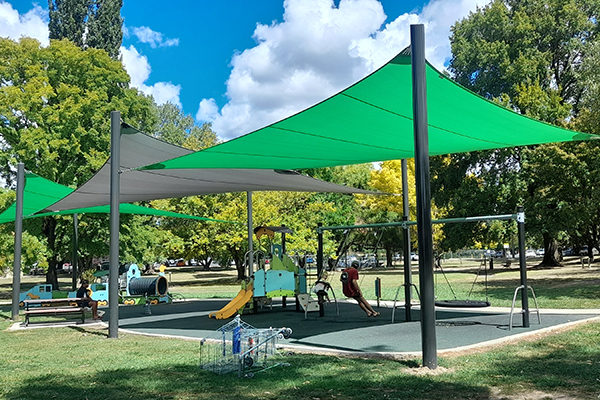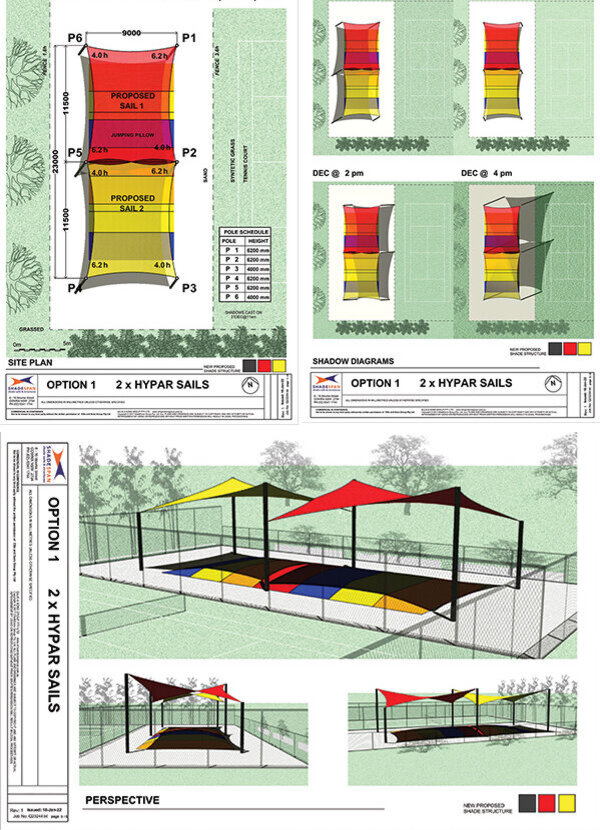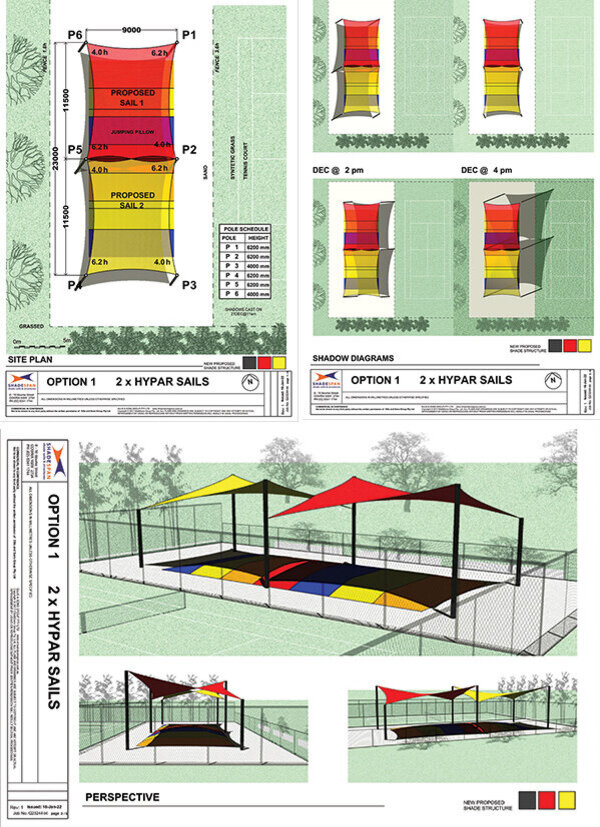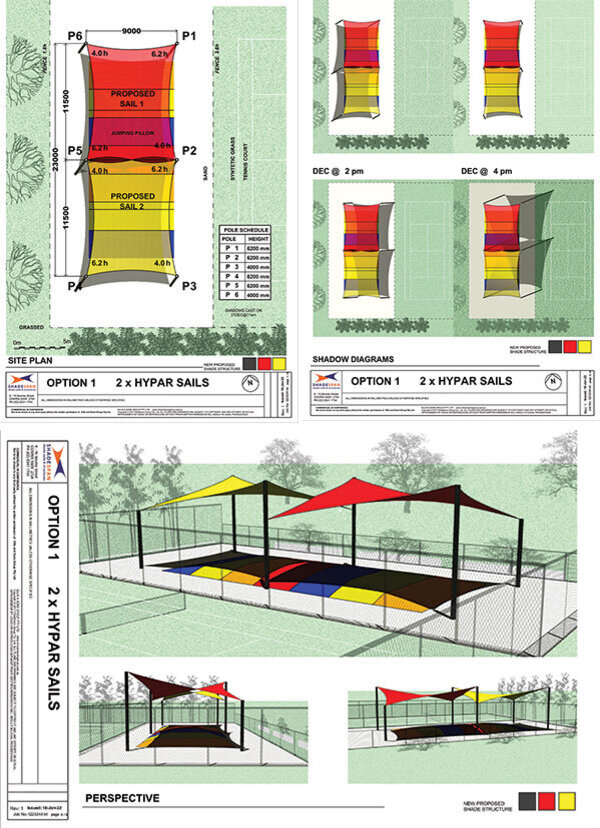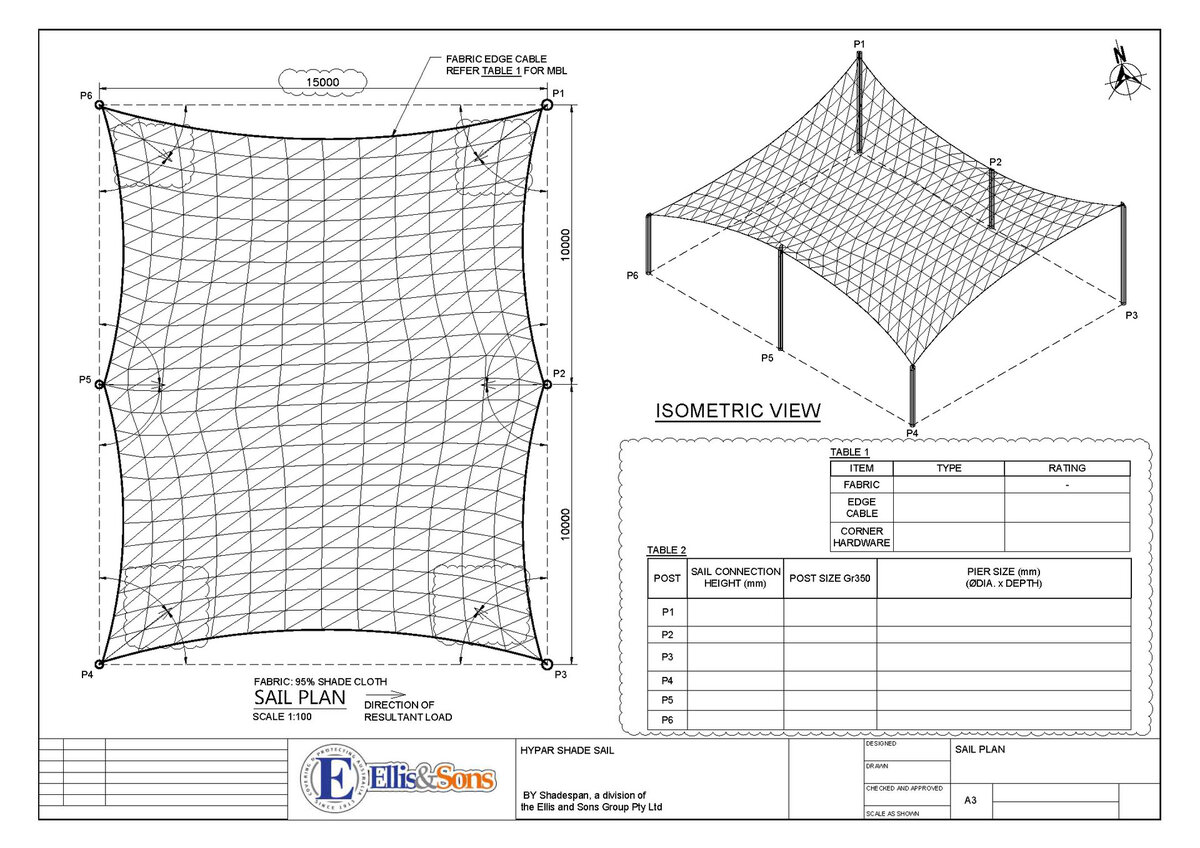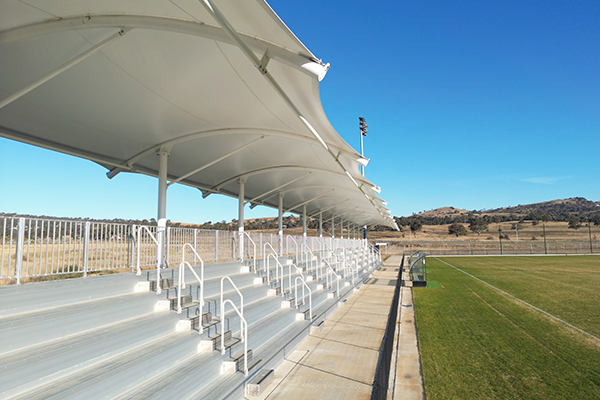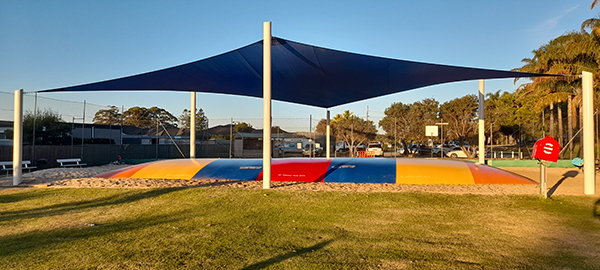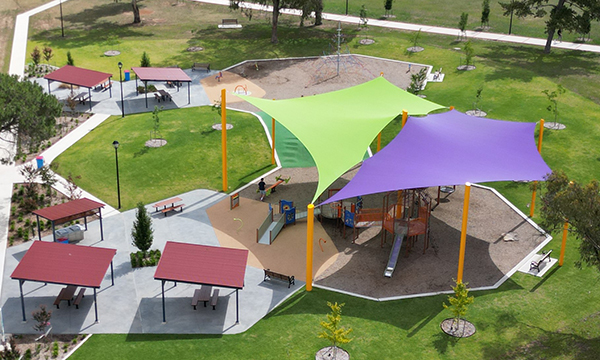Step 1: Design & Engineering
Design
Have you ever seen those flat sails that flap in the wind like a bird and gather water when it rains?!
That’s where design is so important when planning your sail. The crucial detail is that the sail must have a twist – called a “Hypar Design”. If it doesn’t, it will certainly sag over time, no matter how tightly it is tensioned.
The amount of twist is important, so make sure this is correctly calculated before you go ahead.
Next, the sail must give shade where it's needed, when it's needed.
The hottest part of the day is from 12 noon to 3pm, and also keep in mind that the sun is in the northern part of the sky in winter but moves overhead during the summer.
A good design team is trained to work out different options for the shade sails to give the best shade advantage, and will have the software and programs to achieve this.
For your interest, at Ellis & Sons, we have CAD design programs. These programs are utilised by the designers to create Sun-studies showing the shadow provided by the sail and 3D presentations of the sails.
Two options are drawn up: a budget option and a premium option. Both options are to produce a high-quality shade; the Premium option offers a larger structure, offering greater shade.
How does this benefit you?
- Provision of Sun-studies.
The drawings are crucial to the success of the shadesail. These allow you to ensure the vital pieces of play equipment - such as slippery-dips- are actually under shade during the key times of the day. This will save you the pain and expense of attempting to adjust a shade structure later and give you an effective and attractive shade that the public will value and appreciate for years to come. - 3D Presentations
showing a realistic picture of a proposed shade sail which can be used for presentations to interested parties, or for community feedback.
A sample of a Shade Plan, 3D Model and Sun-study are shown on the left.

